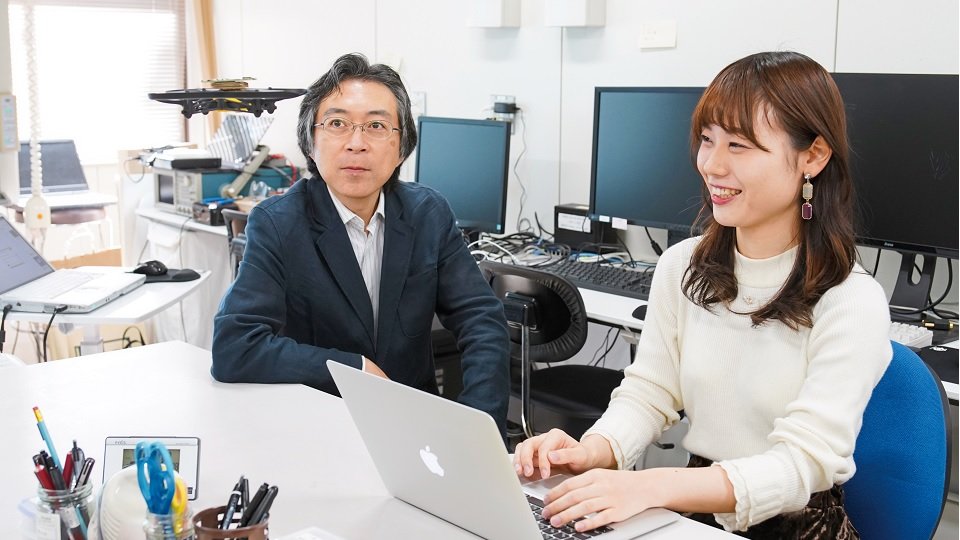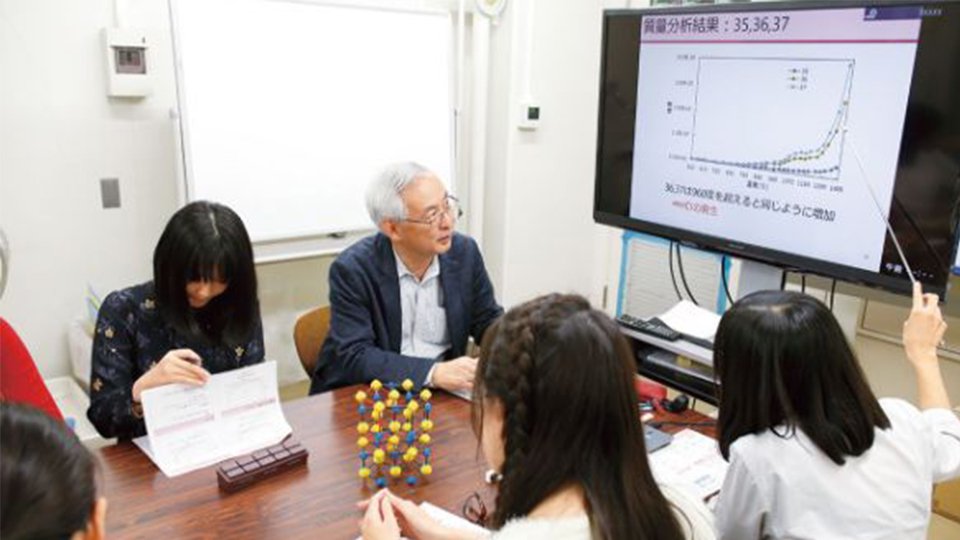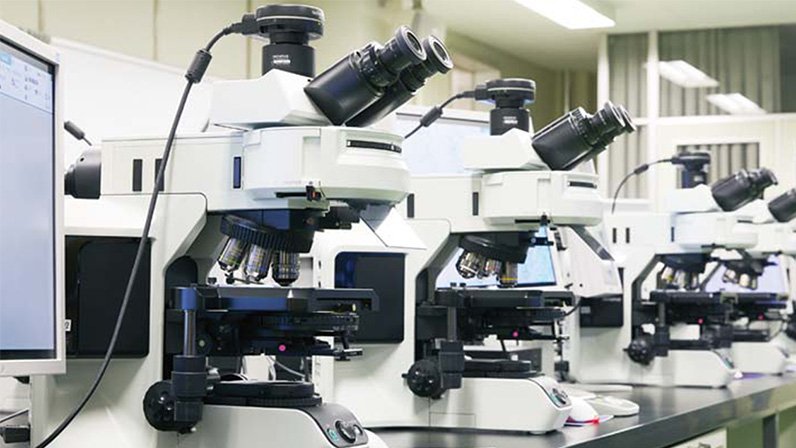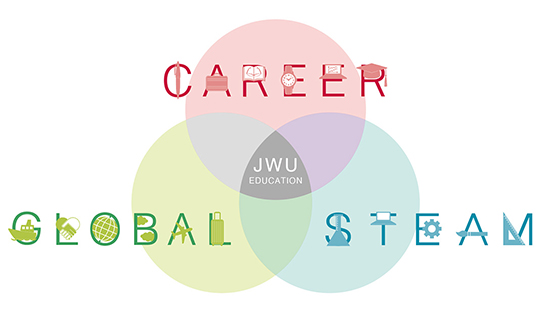Practicality and creativity to open the way to the future at the forefront of contemporary society.
In the Department of Mathematics, Physics and Computer Science, students study mathematics, physics, computer science and their cross-disciplinary fields, and from the third year, they are divided into specialized courses of their choice. These disciplines form the foundation of modern society and are applied not only to computers, telecommunications equipment and the internet, but also to the development of financial, stock, and insurance products, as well as to the development of space, semiconductor, and energy transportation equipment. Graduates are highly regarded for their ability to think mathematically and logically, and to involve others and work in teams.
Features of the Department
A wide range of options in mathematics, physics, and computer science
In the first year, students will learn the basics of mathematics, physics and computer science, and in the second year, they will determine their own aptitude and study more specialized content from the third year onward. In addition to pure mathematics, theoretical and experimental physics, programming, and data science, students can also learn latest content and the interdisciplinary fields of mathematics applied to stock forecasting and artificial intelligence, physics that explains all materials and phenomena from atoms to the universe, and computer science applied to development of softwares and robots. In the fourth year, students will work on graduation research on a wide variety of themes as the culmination of their studies at the University.
Well-equipped research facilities and careful guidance
The Department has several computer rooms, and assistants are provided to facilitate questions in programming classes. In addition, there are well-equipped research facilities, including astronomical observation equipment and multiple physics laboratories, including clean rooms. The Department strives to provide careful guidance to students in their first year of study, including instruction on how to write reports.
Graduates are active in many fields including research, development, and teaching
There are employment opportunities recommended by the Department from more than 80 companies and other organizations. Our graduates are active in development, general engineering, engineering, and teaching positions, making the most of their expertise. The Department offers teaching licenses in mathematics, science, and information, and some students obtain multiple licenses.
Four years of study at the Department of Mathematics, Physics and Computer Science

First year: Learning the basics by taking subjects common to all three courses
Students will learn the subjects common to mathematics, physics and information science courses, as well as the basic subjects of science. Experiments, practical training and seminars also begin in the first year.

Second year: From basics to application ― selecting subjects while considering their course selection from the third year
Students will select and study specialized subjects for each course while considering their course selection from the third year. These are subjects that develop the basics of the first year into applications.

Third year: Selecting courses and Specializing
Students will select one of the three courses of mathematics, physics or computer science. Students will select specialized subjects for each course and work on more advanced studies.

Fourth year: Proactively setting a research theme and address it in the graduation research
Students will set a research theme and work on it in the graduation research under the guidance of a faculty member, using the practical imagination and problem-solving skills they have acquired.
Class introduction
Linear Algebra IIA | First year
Do you know how useful and great theorems are? What is most important in learning is “excitement.”

Professor
Geometry
What is important to me in class is to convey excitement. I try to convey the surprise of how useful and great this theorem is. Sometimes I intentionally make mistakes and then think with students about why they are wrong. I encourage them not only to learn how to calculate with certainty, but also to write logical explanations. On the other hand, I draw a lot of diagrams and explain in a rough and intuitive way that is not found in textbooks. I also have a class to draw figures in four-dimensional space. In this way, I support students to deepen their understanding from both logical and intuitive point of view. In each class I assign a simple report that can be solved by imitating the example and have students develop the habit of studying on a regular basis.
In the "Linear Algebra IIA" in the second semester of the first year, students will learn techniques for simplifying expressions by diagonalizing matrix using change of variables. They can be applied to all questions involving two or more variables, and with a little more advanced mathematics, linear algebra can be applied to single variable calculations. It is also used in statistics and is the foundation of all kinds of studies. In this class, many students will learn the basic calculations of linear algebra, study habits, and the rudiments of how to write logical explanations, as well as how to prepare themselves when facing questions and how to use trial-and-error methods.
Faculty member introduction
Faculty members with a wide range of specialties provide education.


